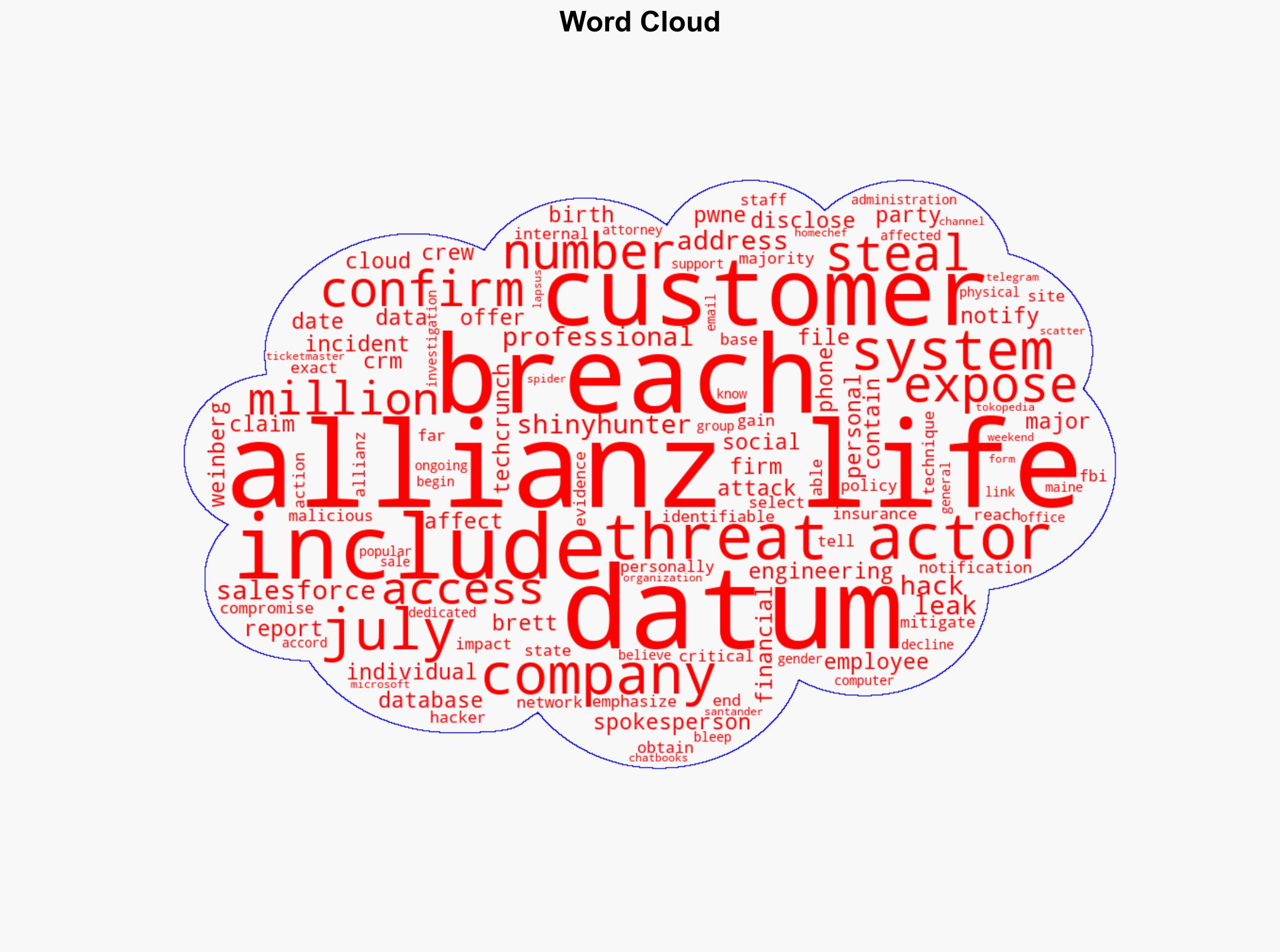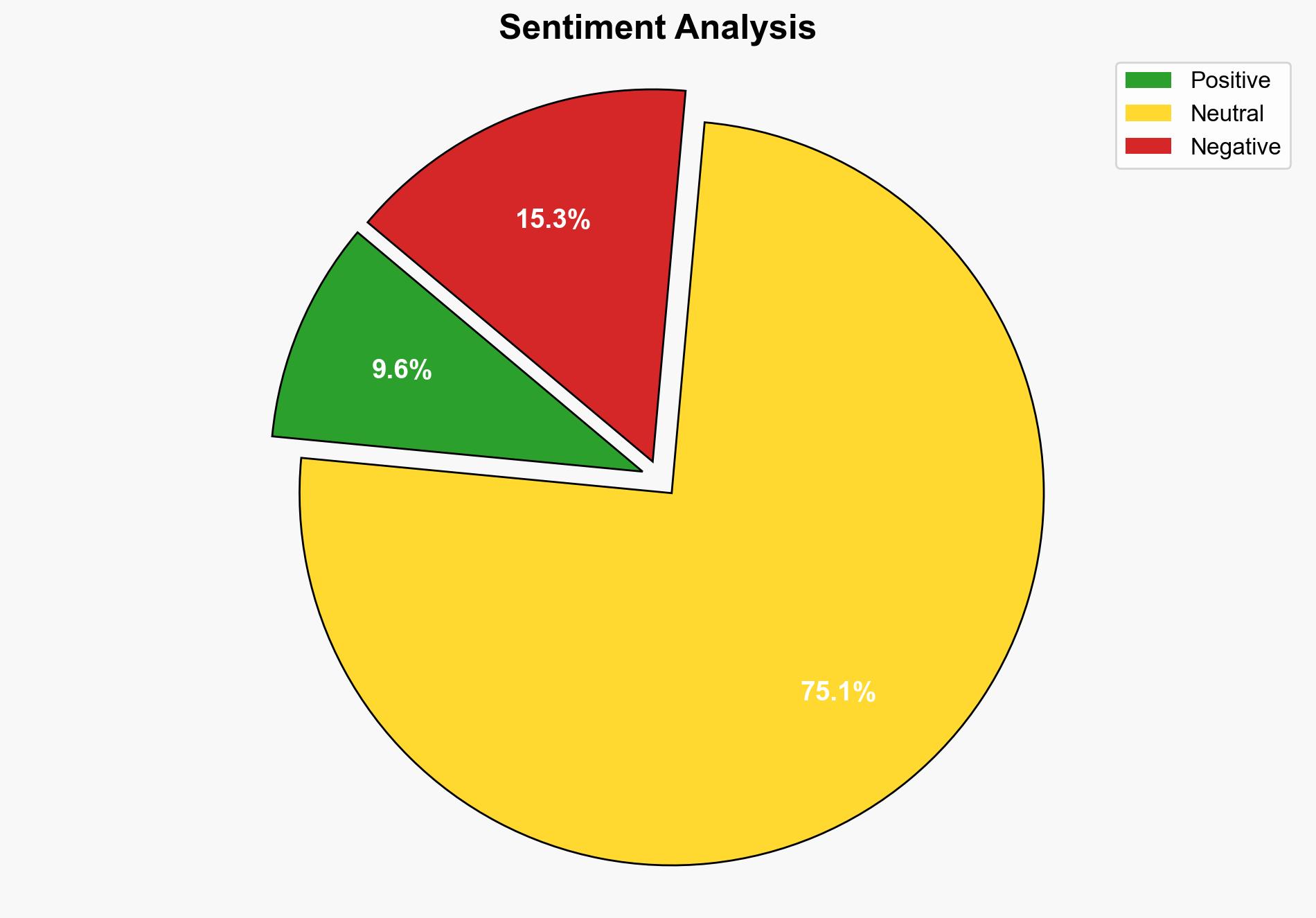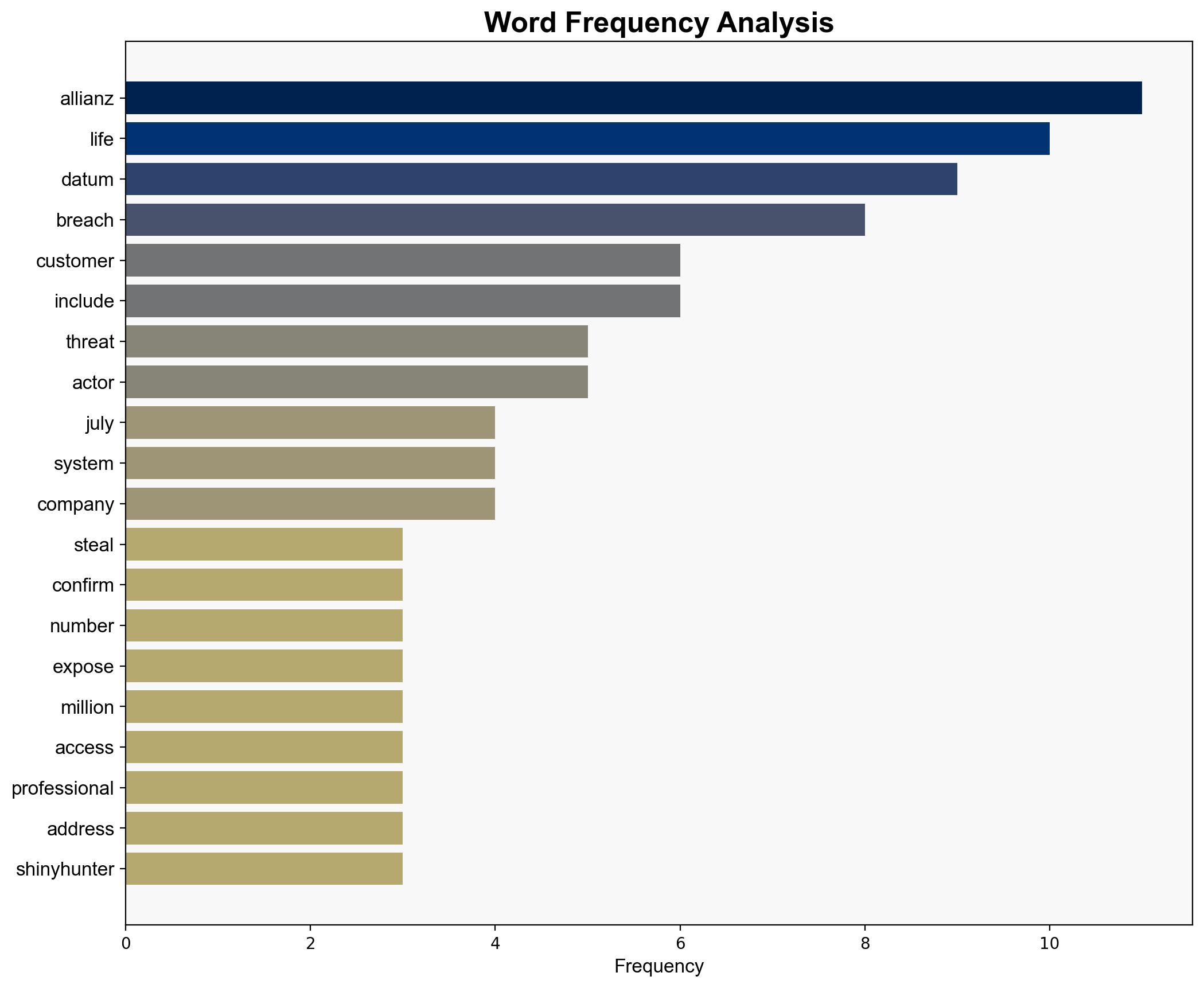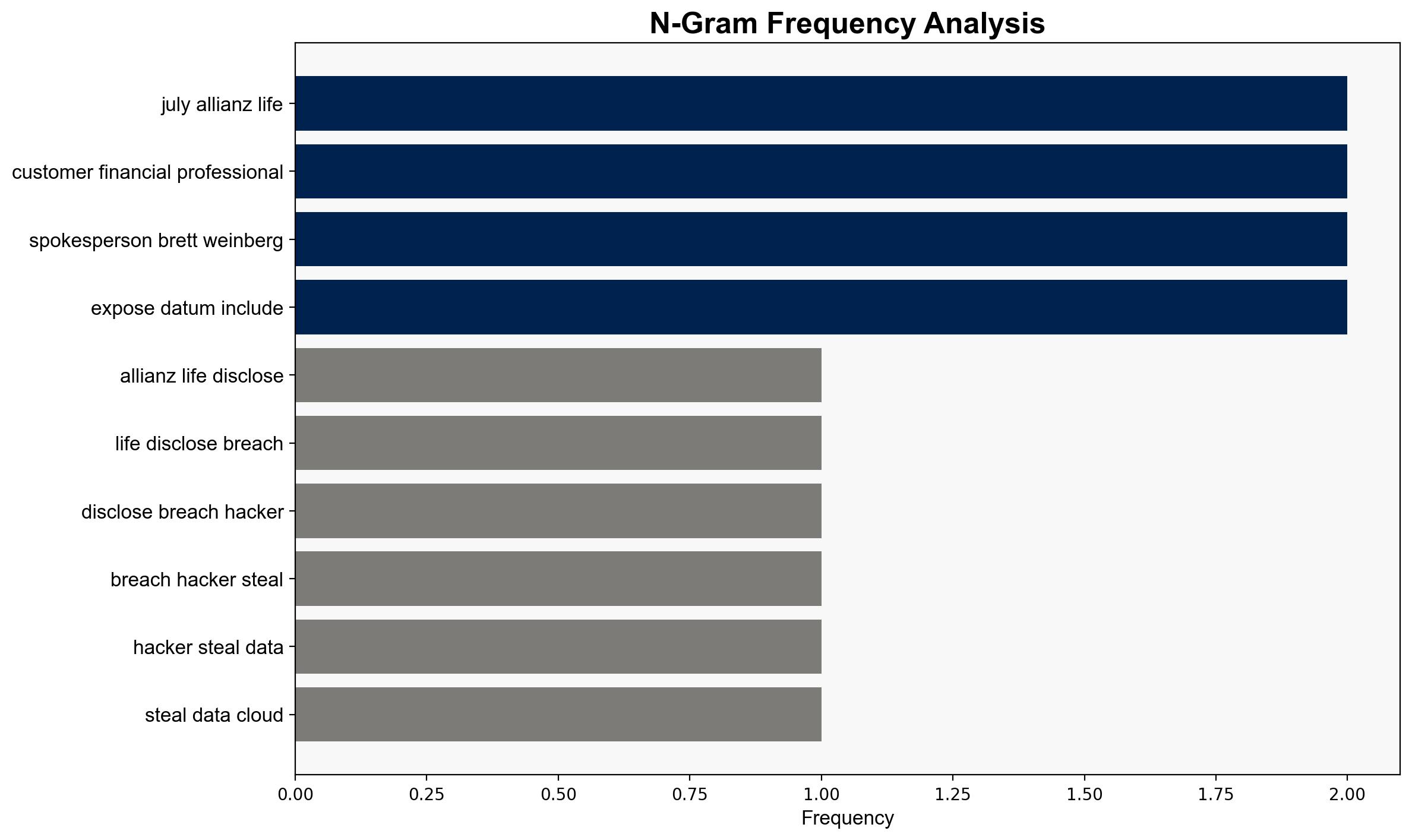Allianz Life security breach impacted 11 million customers – Securityaffairs.com
Published on: 2025-08-19
Intelligence Report: Allianz Life security breach impacted 11 million customers – Securityaffairs.com
1. BLUF (Bottom Line Up Front)
The breach of Allianz Life’s systems, potentially linked to the ShinyHunter group, exposed sensitive data of 11 million customers. The most supported hypothesis is that the breach resulted from a sophisticated social engineering attack targeting third-party systems. The confidence level is moderate due to ongoing investigations and the complexity of attribution. It is recommended that Allianz Life enhance its cybersecurity measures, particularly in third-party risk management, and collaborate with law enforcement to track and mitigate the threat actor’s activities.
2. Competing Hypotheses
1. **Hypothesis A**: The breach was orchestrated by the ShinyHunter group using social engineering to exploit vulnerabilities in Allianz Life’s third-party cloud-based CRM system.
2. **Hypothesis B**: The breach was conducted by an independent threat actor or group, unrelated to ShinyHunter, leveraging a combination of social engineering and technical exploits to access sensitive data.
Using the Analysis of Competing Hypotheses (ACH) 2.0, Hypothesis A is better supported due to the group’s known modus operandi and claims of responsibility. However, the possibility of a false flag operation or misattribution remains.
3. Key Assumptions and Red Flags
– **Assumptions**: The breach was primarily facilitated through social engineering. The ShinyHunter group is responsible based on their historical patterns and claims.
– **Red Flags**: Lack of concrete evidence linking the breach to ShinyHunter beyond claims. Potential bias in attributing the attack to a known group without definitive proof.
– **Blind Spots**: Limited information on the exact methods used to compromise the CRM system and the full scope of data accessed.
4. Implications and Strategic Risks
The breach exposes Allianz Life to reputational damage, regulatory scrutiny, and potential financial losses. It highlights vulnerabilities in third-party systems, emphasizing the need for robust cybersecurity frameworks. If linked to ShinyHunter, it suggests a persistent threat capable of targeting major organizations, potentially escalating to further attacks on similar entities. The breach could also inspire copycat attacks, increasing the overall threat landscape.
5. Recommendations and Outlook
- Enhance third-party risk management and conduct comprehensive security audits of all external systems.
- Strengthen employee training programs to mitigate social engineering risks.
- Collaborate with cybersecurity firms and law enforcement to track and neutralize threat actors.
- Scenario Projections:
- **Best Case**: Improved security measures prevent future breaches, and the threat actor is apprehended.
- **Worst Case**: Additional breaches occur, leading to significant financial and reputational damage.
- **Most Likely**: Increased cybersecurity measures reduce immediate risks, but the threat landscape remains volatile.
6. Key Individuals and Entities
– Brett Weinberg (Allianz Life spokesperson)
– ShinyHunter group (alleged threat actor)
7. Thematic Tags
national security threats, cybersecurity, counter-terrorism, regional focus




